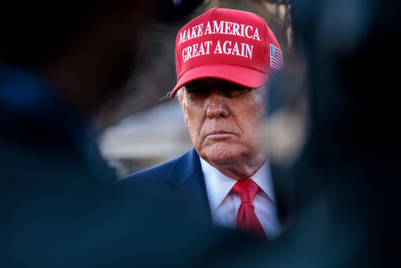
Despite very real worries over economic recession and job security, the latest research from Wavemaker suggests many in Asia-Pacific have held onto a sense of optimism even as the pandemic continued to spread globally.
In its 'Braving the New Normal' study, Wavemaker pulled together a quantitative study of 8,784 APAC respondents that included its poll of 4,116 in mainland China from February 15th to 17th, together with an expanded survey from Australia, India, Hong Kong, Japan, Malaysia, Philippines, Singapore, South Korea, Thailand, Vietnam and Indonesia between March 26th and April 16th.
It found that consumer optimism has remained throughout the crisis, with 78% of respondents in China and 63% in Wuhan stating they were optimistic even as the pandemic peaked in February. Six weeks later, 57% of people across APAC still felt optimistic, especially 18 to 29 year-olds (63%).

Context is everything: Lessons from China
Yet it’s clear from the many studies being undertaken that attitudes are changing every
day and Wavemaker too has found that optimism levels are highly situational, which will help shape what kind of recovery happens in each market. Wavemaker and Kantar suggest more optimistic APAC markets may see a 'V' or 'W' shaped recovery while others are more likely to experience 'U' or 'L' shaped recoveries.

Likewise, not all trends we see under COVID-19 will continue to the same degree that they have been under the pandemic. Looking at the Chinese experience, Wavemaker has seen how some consumer behaviours like ordering fresh food online had been steadily rising anyway and COVID-19 merely accelerated existing demand to a new level of sustained growth. Other trends like fitness apps used at home are more likely to receive a short-term bounce which may not be sustained through the recovery period.


Since many Chinese brands are looking to capitalise on 'accelerated trends' there is a lot of pressure to rapidly innovate. For example, a lot of brands are quickly jumping on new emerging channels, such as livestreaming, which Wavemaker says has resulted in "a chaotic battle with limited observable effectiveness." Brands are encouraged to review the balance of 'noise' around a new trend to resist copycat innovation, keeping all initiatives relevant to core objectives and ideally to brand purpose.
Australia: Younger people most optimistic
Australia was already reeling from extreme weather and devastating bushfires, yet COVID-19 blindsided the country at a time when they were hoping to come up for air. Concern has accelerated quickly, with Kantar research showing that Australians with ‘significant concern’ about COVID-19’s impact jumped from 16% to 45% over a two-week period. Extreme pessimism is felt more among older Aussies while younger Aussies are more likely to feel ‘very optimistic’ about the future.

Wavemaker sees a surge in a variety of ‘at home’ behaviours Down Under, particularly the desires to stay hyper-informed. Finding new ways to connect is more important than ever—particularly for
18-29 year-olds as almost half say they have increased the amount they talk to others.
75% of Aussies believe the outbreak will be under control within 6 months. When this
happens, the biggest behaviours expected to bounce back are travel (44%), being with
family (37%), shopping (32%), meal gatherings (28%) and outdoor dining (27%) –
providing rich opportunities for brands to help people celebrate reconnecting and
togetherness.
Recommendation: brands in Australia should find ways to make declining behaviours more accessible, like Colgate's TVC campaign revision to emphasise staying connected and continuing to smile.

India: middle-aged cautious about spending
Having entered a government-enforced lockdown on March 25, Indians face new challenges
adjusting to a life of social distancing, curtailed ecommerce deliveries and working from home.
Yet home quarantine hasn’t dampened their spirits with 75% respondents feeling very optimistic.
While 61% of respondents said that they will spend more time browsing products online, there is a more cautious and practical approach to spending only on things that are worth the money (54%) especially in the age group of 30-39 year-olds (58%). A third of the respondents admit that they have become more conservative and are increasing their deposits and investments in financial products.

For 15-24 year-olds, time spent on gaming has increased by 34%. Conversely, 50-65 year-olds are spending 66% more time than usual talking to others compared to the younger age groups.
Television, video and social networking platforms are the most popular ways to pass time. News channels in particular have seen 3x growth in viewership since the lockdown. According to some Indian OTTs, there is nearly a 20% increase in user base, time spent and even daily active users. Social networking platforms including Facebook, WhatsApp, TikTok and Instagram have seen a 19% increase in sessions per week, per user and a 25%+ increase in time spent per user, per week.
Recommendation: The key for brands is to transform their communication, positioning and content to appeal to consumers seeking more fulfillment as 'old school' aspirations and brand messages have already been discarded.
Japan: Optimism hard to find
Japan's recent state of emergency in seven prefectures and the postponement of the 2020 Tokyo Olympics are all taking their toll on Japanese expectations, with the economic fallout from the Olympics this year expected in the billions of dollars, deepening recession fears.

Nearly a third (30%) of Japanese feel very pessimistic, believing their lives will be affected for many years, with 58% describing their current state as ‘worried’ and 52% as ‘scared’. Nearly half (45%) feel COVID-19 will take more than a year to resolve.
Pessimism is felt across all generations, but mainly among younger audiences who little hope for their immediate future.
Recommendation: Brands will have to adapt their 2020 plans with the postponement of the Olympics and be more entrepreneurial to win in this market, seeking new purpose in planning for better days in future.
For more, including deep dives on Southeast Asian markets see Wavemaker's full report.





.jpg&h=334&w=500&q=100&v=20250320&c=1)
.jpg&h=334&w=500&q=100&v=20250320&c=1)

.jpg&h=334&w=500&q=100&v=20250320&c=1)

.jpg&h=334&w=500&q=100&v=20250320&c=1)
.jpg&h=334&w=500&q=100&v=20250320&c=1)







